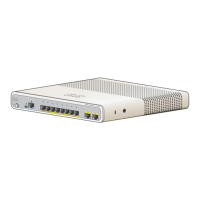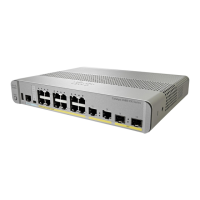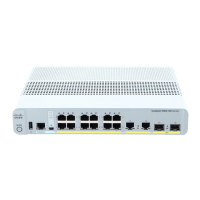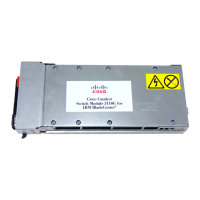2-398
Catalyst 3750-X and 3560-X Switch Command Reference
OL-21522-02
Chapter 2 Catalyst 3750-X and 3560-X Switch Cisco IOS Commands
mls qos trust
mls qos trust
Use the mls qos trust interface configuration command on the switch stack or on a standalone switch to
configure the port trust state. Ingress traffic can be trusted, and classification is performed by examining
the packet Differentiated Services Code Point (DSCP), class of service (CoS), or IP-precedence field.
Use the no form of this command to return a port to its untrusted state.
mls qos trust [cos | device cisco-phone | dscp | ip-precedence]
no mls qos trust [cos | device | dscp | ip-precedence]
Syntax Description
Defaults The port is not trusted. If no keyword is specified when you enter the command, the default is dscp.
Command Modes Interface configuration
Command History
Usage Guidelines Packets entering a quality of service (QoS) domain are classified at the edge of the domain. When the
packets are classified at the edge, the switch port within the QoS domain can be configured to one of the
trusted states because there is no need to classify the packets at every switch within the domain. Use this
command to specify whether the port is trusted and which fields of the packet to use to classify traffic.
When a port is configured with trust DSCP or trust IP precedence and the incoming packet is a non-IP
packet, the CoS-to-DSCP map is used to derive the corresponding DSCP value from the CoS value. The
CoS can be the packet CoS for trunk ports or the port default CoS for nontrunk ports.
If the DSCP is trusted, the DSCP field of the IP packet is not modified. However, it is still possible that
the CoS value of the packet is modified (according to DSCP-to-CoS map).
If the CoS is trusted, the CoS field of the packet is not modified, but the DSCP can be modified
(according to CoS-to-DSCP map) if the packet is an IP packet.
cos (Optional) Classify an ingress packet by using the packet CoS value. For an
untagged packet, use the port default CoS value.
device cisco-phone (Optional) Classify an ingress packet by trusting the CoS or DSCP value sent
from the Cisco IP Phone (trusted boundary), depending on the trust setting.
dscp (Optional) Classify an ingress packet by using the packet DSCP value (most
significant 6 bits of 8-bit service-type field). For a non-IP packet, the packet
CoS is used if the packet is tagged. For an untagged packet, the default port
CoS value is used.
ip-precedence (Optional) Classify an ingress packet by using the packet IP-precedence value
(most significant 3 bits of 8-bit service-type field). For a non-IP packet, the
packet CoS is used if the packet is tagged. For an untagged packet, the port
default CoS value is used.
Release Modification
12.2(53)SE2 This command was introduced.
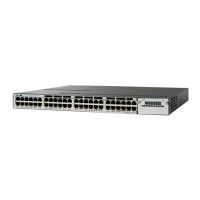
